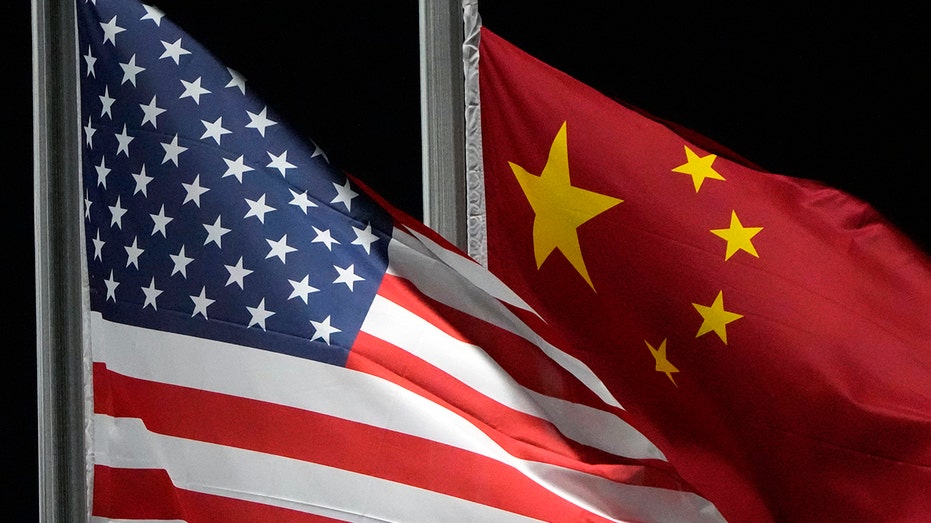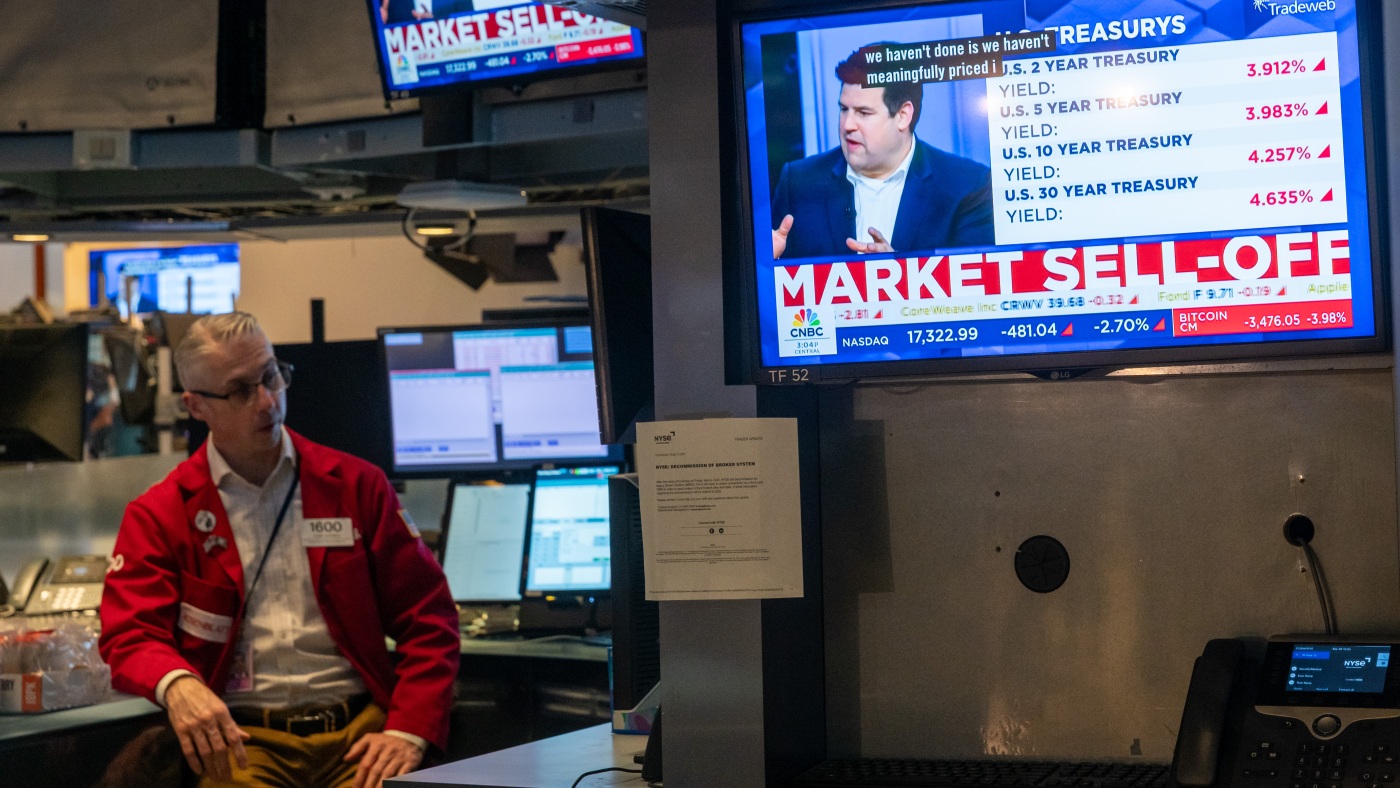Trump federal worker firings threatens to destabilize DC economy
President Trump’s widespread firing of federal workers threatens to destabilize a Washington economy closely intertwined with the fate of government employees. More than 80 percent of the nation’s federal employees are located outside Washington, but the concentration of workers in the capital means President Trump and Elon Musk's plans are sure to have an outsize...

President Trump’s widespread firing of federal workers threatens to destabilize a Washington economy closely intertwined with the fate of government employees.
More than 80 percent of the nation’s federal employees are located outside Washington, but the concentration of workers in the capital means President Trump and Elon Musk's plans are sure to have an outsize impact locally.
The D.C. government dropped its projection for how much the government will take in annually over the next five years, lowering its estimate by roughly $342 million because of a forecast for “sharp declines” in the federal workforce.
Internal data from Bank of America shows credit card spending in Washington has dipped since February, something the bank concluded was “likely due to the impact of DOGE cuts.”
Unemployment filings also jumped for D.C., Maryland and Virginia across both February and March.
“When people either lose jobs, or when they even just fear losing a job, they tend to cut back on spending. It’s not a time to buy a new car, or a new house, or even go on vacation or go to a restaurant. So people might be trying to beef up their emergency funds that can have a pretty significant effect on the local businesses, which then might lay off workers,” said Julia Pollak, who is now the chief economist at the U.S. Department of Labor but who spoke to The Hill while working as the chief economist at ZipRecruiter.
“So that's why even a small increase in the unemployment rate can snowball quite quickly.”
Since Trump took office, agencies have fired thousands of federal workers.
But the full force of the planned layoffs has yet to be felt.
Agencies this month are scheduled to provide plans for widespread reduction in force, and the Trump administration could begin layoffs 30 days after that.
“The problem is that what is happening is very, very fast, very, very sudden, very unanticipated, and the scale is unclear. …Some government employees who have left or being forced out, are going to find jobs in the private sector pretty quickly, right? Some aren't,” said Martha Gimbel, executive director and co-founder of the Budget Lab at Yale University.
Gimbel said some workers fired by Musk have quickly found work — noting agencies like the U.S. Department of Agriculture struggled to rehire some of its employees.
“This is not going to apply to everyone, right? So, for instance, people in development, I think it's going to be harder to land because the entire sector is getting whacked at the same time.”
Forecasting from Oxford Economics estimated that as many as 200,000 federal workers could lose their jobs, including nearly 34,000 in D.C.
Nationally, Oxford estimates 35 percent of those workers will move to the private sector, 15 percent will get jobs in state or local government, 5 percent will become self-employed, and 10 percent will retire. That leaves 35 percent who they project will remain unemployed.
“It really just depends on what skills you brought to the federal job in the first place. Is it accounting skills? Is it administrative assistant skills? But it is hard to wrap your head around just how so many employees could transfer into other roles, in other places, but eventually many of them do,” said Barbara Denham, a senior economist at Oxford Economics.
Gimbel said workers often find employment — though she said that work may not be professionally satisfying.
“This moment feels very overwhelming, but people do have transferable skills. People do acquire new skills. And I do think that people will find jobs eventually. It's just a question of, are those jobs in geographic locations they want to be in? Are those jobs doing things that they want to do? How are those jobs compensated relative to what they do right now? And that's just going to look different for different government workers,” she said.
Pollak described hiring at the national level as slow and offered a less optimistic outlook.
“There's kind of a skills mismatch between the jobs that are most starved for talent and the groups of workers who are likely to be starved for jobs,” she said.
“And then it's probably going to be even harder for these workers because they are concentrated in specific fields and geographies. So there'll be a glut of talent in the most relevant markets.
“Professional business services employment has been flat or negative over the past two years, tech employment has been flat to negative over the past two years. The key white-collar sectors where these workers would ordinarily go have been anemic, and that's definitely going to sort of cast a bit of a cloud.”
From the stance of the Trump administration, the nation would be better served by federal workers joining the “higher productivity” private sector.
“The way to greater American prosperity is encouraging people to move from lower productivity jobs in the public sector to higher productivity jobs in the private sector,” the Office of Personnel Management wrote in a frequently asked questions document as it encouraged federal workers to take a buyout.
Gimbel rejected that concept.
“There are services the government provides because there's not a financial incentive for the private sector to do so, right? And it is not to say that those services are not valuable.
“As an example, the private sector doesn't do a lot of pandemic response stuff. It doesn't make any sense for them, given the probability of a pandemic and the timelines they operate on,” she said.
“If you look at weather, there are efficiencies from having NOAA, rather than having each individual part of the private sector, try to send up their own weather balloons all the time. If you destroy those functions that the federal government provides to the private sector, you might end up with some workers who are individually paid more, but that doesn't mean that the overall economy is more productive.”
Even if the government fires the 200,000 workers projected by Oxford — it would raise the national unemployment rate by 0.04 percent with a slightly higher figure in D.C.
Pollak encouraged fired federal workers to be diligent about applying for jobs.
“I think these workers should be warned that the numbers game, it's not that pretty, and they will need to perhaps search longer and apply to more jobs, and be very consistent,” she said.
She noted that while fields like nursing and skilled trades are needing more workers, sectors like nonprofits, research institutes and think tanks where some government workers might otherwise land are scaling back.
And those effects could play out differently in D.C., a city whose economy has long relied on the stability of the federal government and whose workers have prioritized a steady living in government over the private sector.
“It's really not something that any of these workers are expecting. It may have more of a psychological impact as a result,” she said.
“These are people who've sort of selected into roles with job security, and who value that perhaps more highly than other workers who are perhaps used to bouncing around, so it could have a bigger effect on confidence and spending, perhaps just given the type of person involved.”




















_Anthony_Brown_Alamy.jpg?#)





















































